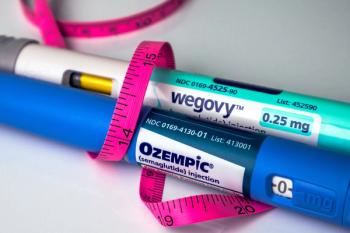
Written Rx quality is uneven, study finds
While most pharmacies gave test patients printed information about their drugs, the quality of the leaflets was uneven, according to a University of Wisconsin School of Pharmacy study.
COMMUNITY PRACTICE
Written Rx quality is uneven, study finds
While the good news is that most patients were given written drug leaflets when they had new scripts filled, the bad news is that the information was not uniformly useful. A national study is helping to determine whether community pharmacies will be able to stave off the dreaded MedGuides.
Among a random sample of 384 community pharmacies in 44 states, 89% of consumers got computer-generated drug information leaflets with new prescriptions covering four different medications, according to the study conducted by researchers at the University of Wisconsin Madison School of Pharmacy. Secret shoppers posing as out-of-towners presented scripts for four test drugs: atenolol, glyburide, atorvastatin, and nitroglycerin.
The quality of the drug leaflets failed to match the quantity. The information was useful only about half the time, according to consumers and a panel of 16 experts who followed a set of eight criteria to judge the leaflets. Among the criteria were whether the materials were scientifically accurate and up to date; were easily understood by consumers; and provided drug information such as usage, directions, precautions, contraindications, and adverse reactions.
The study is posted on the Web site of the Food & Drug Administration's Center for Drug Evaluation and Research at
While the Wisconsin study found that 89% of people in 2001 received written information, the materials were not in full compliance with the criteria for what constitutes useful, said FDA spokeswoman Crystal Rice. She added that the FDA plans to work with all parties involved in the preparation of drug leaflets in order to improve the usefulness of patient information. On July 17, the agency's Drug Safety and Risk Management Advisory Committee will meet to discuss ways to boost the information usefulness score.
Originally due in 2000, the Wisconsin study was an outgrowth of the FDA's proposed Medication Guides, which touched off a firestorm of opposition. The original mandatory MedGuide program was put on hold in 1996 when Congress passed Public Law 104-180. That measure prohibited the FDA from requiring MedGuides if 75% of patients obtaining new Rxs were given useful written information by 2000 and 95% by 2005. The idea was to let community pharmacy prove it could voluntarily provide the information without having an FDA mandate rammed down its throat. MedGuides did resurface in 1999 but only for certain high-risk medications.
Community pharmacy is meeting the challenge of voluntarily pro- viding drug information and, according to Mary Ann Wagner, R.Ph., v.p., National Association of Chain Drug Stores, is well on its way to meeting the 95% threshold. There is, however, concern and some head scratching about why the quality of the leaflets failed to match the quantity, she said.
"We're working with FDA to see if we can't help it get to its objective of more quality information being distributed," said Wagner. "The agency, too, doesn't quite understand where this is breaking down. We need to do more digging to find out about those leaflets that didn't make it, where they're coming from, and why. Once we solve that problem, I think that the quality will increase pretty quickly."
The study's take-home message is threefold, said Carmen Catizone, executive director, National Association of Boards of Pharmacy, which was asked by FDA to oversee and manage the study. First of all, community pharmacy has no time to rest on its laurels if it's going to meet the 95% target and avoid the FDA mandate. Secondly, pharmacists have to examine the information being provided by the leaflet vendors and the study findings to devise ways to improve areas that don't measure up.
"What we have to look at now is whether the information is presented in a way that's useful to the patient or is simply stapled to the bag," Catizone said. "And finally, any written information from the pharmacist has to be supplemented with counseling and interaction with the patient. If there's consultation going on, I think there's leeway for community pharmacy to say, 'We're meeting the standard because here's what we do in our interactions with the patient.'"
Carol Ukens
Carol Ukens. Written Rx quality is uneven, study finds.
Drug Topics
2002;14:14.
Newsletter
Pharmacy practice is always changing. Stay ahead of the curve with the Drug Topics newsletter and get the latest drug information, industry trends, and patient care tips.




